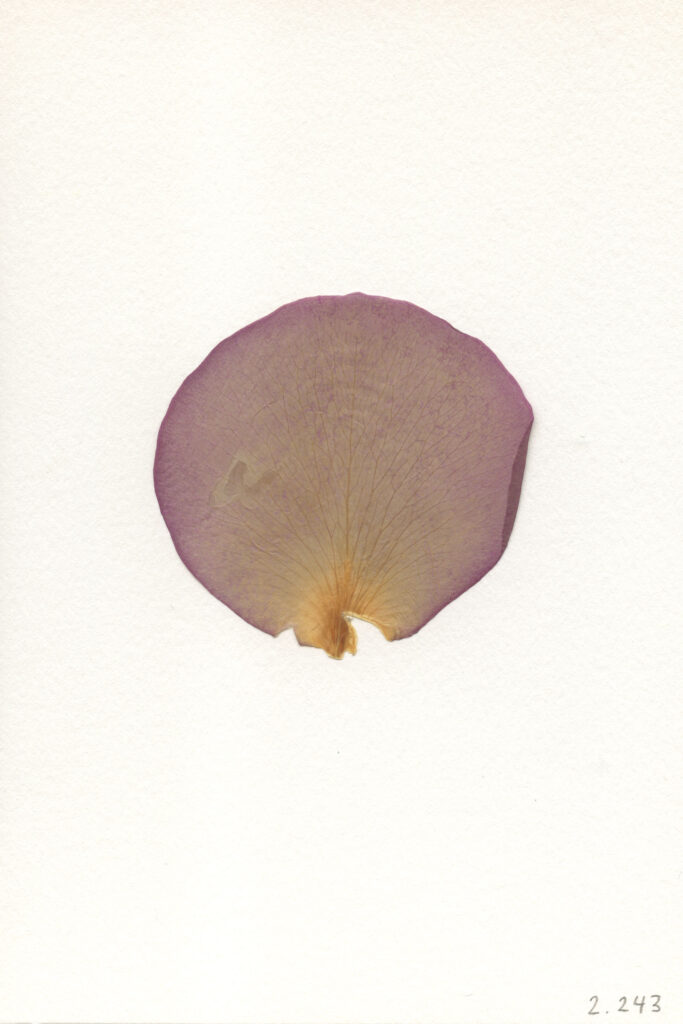November 23, 2021
Artist to Watch
SARAH MEYOHAS
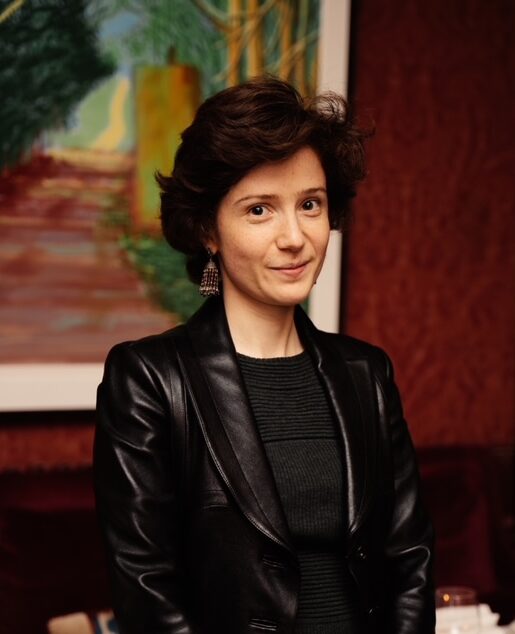
NB: When we first met and spoke in November 2016, you had already created the BitchCoin project and the Stock Performance takeover of 303 Gallery, where you traded stocks and artistically shared the immediate impact, or lack thereof. The stock changes were reflected in oil stick on canvas. How we conceive and understand value, and how it’s represented, is a central theme in your work. Can you remind us how you came to examine this intersection of the finance world and the art world?
SM: My background is finance so that was the first lens through which I was looking at the world. Then I went to art school. Art obviously has a relationship to value, whether it be economic, spiritual or cultural. It has a very complex relationship to value. Given my background, and given what I wanted to explore, value became this conceptual knot that I was looking to understand and untangle. Value doesn’t exist in a vacuum; it isn’t a standalone thing. It is a relationship, and it appears in exchange. In a void, there is no such thing as value. An exchange is a play of substitutions: one thing is in the place of the other, and that is ultimately a representation. The reason that art has to do with value, and therefore has to do with currency, is that currency is the representation [of value] that circulates.
I was reading theory — “The Currency of Images” — and thinking about value, very abstractly, from that side of it. I was also thinking about value very practically, in terms of things like our economy and how values emerge from that in a global system. I was developing BitchCoin in 2014, after I had heard about blockchain and thought it was an amazing construction of value, that didn’t rely on the force of government. Blockchain was a completely new concept. The metaphor of gold was also very interesting, because that relates to both the blockchain and art. Bitcoin, as a coin that’s mined, goes through an exertion process to get the output; that’s how the currency expands. Art, obviously, has a very strong relationship with gold. Gold is at its base an artistic material that was only used for cultural purposes; it didn’t have any other purpose, and that’s why it became currency.
So, in doing the operation of linking the two, I wanted to make my own currency as an artwork, and I wanted to make it hyperfeminine as a statement. I decided to back it with my own artwork — to give it some sort of value — and that’s where I came up with the Speculations series. The visual motif of the Speculations is the metaphor for the blockchain; they’re blocks that go on infinitely. It’s the same play on words — specular relation — it’s about an image of an image of an image of an image. It’s a constant exchange, with the image as the operation of the three dimensional thing appraising itself in two dimensions. It’s an operation of making a value of something. It all turns into a kind of soup of concepts — values and reflections. The fundamental thing that I’m doing is connecting — whether it’s blockchain, the public markets, big data or the cutting edge of augmented reality tech — to identity, and to a body (the most subjective things in life) because they’re actually just related.
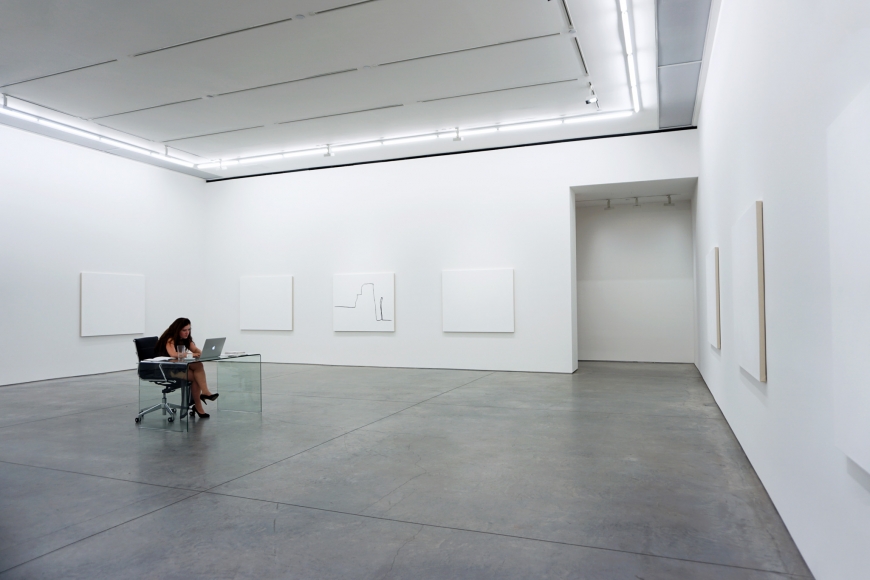
NB: In your September 2021 artnet op-ed, you address the differences between BitchCoin (which predated Ethereum), and Damien Hirst’s project The Currency. What are your thoughts on gender, and gendering, in the crypto space? What has been your impression of the recent surge in NFTs, and the crypto space in general?
SM: In terms of gender, being in the NFT space — it’s tricky. The crypto space is about anonymity; people are anonymous on crypto. To a certain extent, your genetic makeup is unimportant. That’s not what it’s about. It’s not about who you are in the real world, it’s about what you’re like in the metaverse. To some extent, that is really refreshing, because it does feel like — in the real world — my genetics have way too much bearing on how people judge my identity.
In crypto, you’re anonymous, and that’s a breath of fresh air compared to identity in the real world. The downside is that most of the audience is men. It’s just the reality. The people who are buying NFTs — they’re traders and they’re crypto investors. Even if they don’t know who you are — and they don’t care if you’re a woman, a Black person or a trans person — the type of work that appeals to them [men, as the audience] is work that is very masculine. Think of the Bored Apes — this work is obviously very ‘bro culture’ masculine. Even generative art, as a concept and how it works, is fundamentally masculine. Maybe people will find this controversial, but it’s true.
There is a deluge of material out there, that in order to give value to an NFT you need to develop a community with a Discord, on which everyone is chatting and contributing, and it feels like you’re building some sort of movement. You need to constantly engage your audience, which is not necessarily what makes a great work of art. Great art is not consistently engaging you in a chat room. That’s why some of these projects aren’t really art; they’re cultural, collectable moments with aesthetic and artistic parts.
Then you have the generative art. As a cultural movement, people like to have editions where you can pick one (and one is better than another) but they’re all sort of random, and there is the element of rarity. This set-up kind of exists in the traditional art world. A painter makes somewhat similar works, and some are better than others, and you can make a sort of contest of which one is the better one, even if they look similar. Generative art is a crypto version of that. They have limited the tools of production to be a limited number of lines of code, and it’s all on chain. By limiting the tools of production, you’re allowing someone to display some sort of mastery with a tiny JPEG — that’s the movement of generative art. And it’s fine; it’s not a bad thing. It’s just, sometimes the results can be underwhelming. But I don’t want to speak ill of generative art — I think that out of all the things in NFTs, it’s one of the better things.

NB: In the relatively short period of time since NFTs have entered the mainstream, what’s your impression of the market, and this recent surge? In the crypto space you are one of the few women in this area, so I’m curious to hear your experience.
SM: I feel as though I’m in this odd Venn Diagram where I’m the only person who is in the traditional art world, in the crypto space, and is a woman. I’m alone in that convergence of the diagram.
NB: You’re the poster child for women in the crypto crossover space!
SM: I am and I’m not. The original work was a conceptual work where I proposed a system as an artwork, embodied it, and later invested in it. I didn’t come from the digital art space. The Venn Diagram then, by adding in ‘Conceptual Artist,’ becomes smaller and there really is no one else. But, I’m not a poster child, I’m just a weird outlier. The poster child is someone like Beeple. He’s a poster child for the NFTs.
NB: What has it been like?
SM: It has been fascinating. The thing that’s amazing about NFTs is that you’re selling something for which someone doesn’t necessarily need wall space. It’s the revenge against painters — all the time, everywhere — making more money than anyone else. It’s revenge! Finally, the weirdos can thrive! That’s the amazing thing. Normally, if you just collect for the love of it — with no thought or concern about where you’re going to put it and deal with it — you are in a very small, very amazingly privileged group. With NFTs, if you’re someone without a large apartment, you can still have a collection. What I hope for NFTs is that they end up bridging to the physical world, and allow for a separation of the stewardship of the physical asset from its ability to have some sort of financial value.
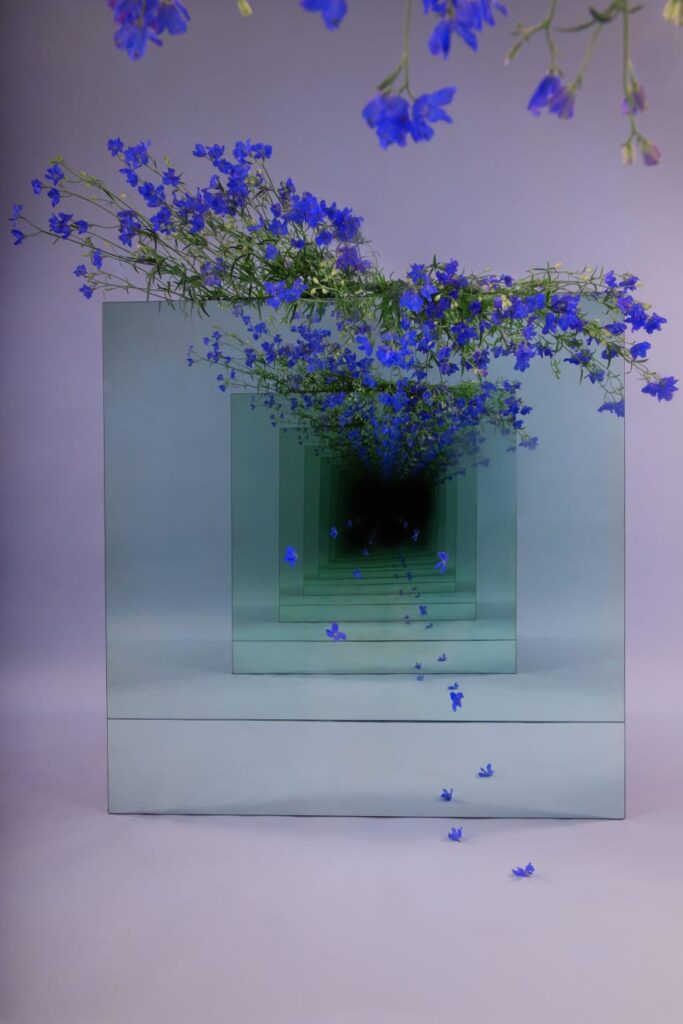
NB: Have you explored that in your work? BitchCoin has the physical piece that goes with it, but in terms of a display process for the NFTs, is that something you’ve looked at?
SM: Displaying the coin? No. Some people do choose to display the coin — I’ve seen it displayed in a residence. The longtime benefit of painting has been that it’s portable, archival, and easily comparable. For all of the art that is not like that, it’s very difficult. I think people should start making NFTs and start linking them in legal ways to physical artworks — but not linking just to another painting. It should be with things that can’t otherwise move, for example.
The NFT market is on fire. Communities are being built around it. It’s a new type of collecting, and the collectors value different things.
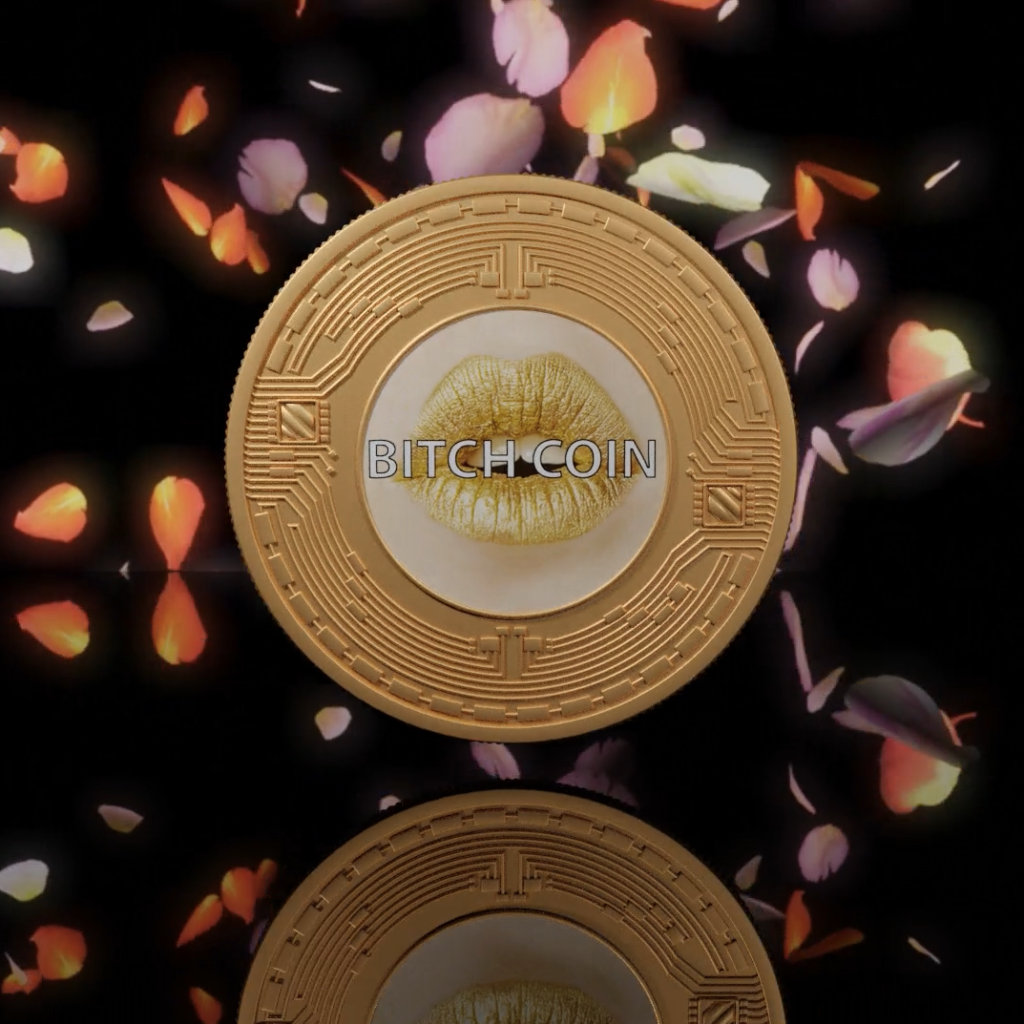
NB: It’s a different type of collector, too. The people who are buying NFTs don’t necessarily know the names Judy Chicago or Gerhard Richter. And those names might just not be relevant to them. I do liken NFT culture to sneaker collectors. It’s very much driven by community, the culture of likes, social media followings, and the persona that is ultimately built around the identity of the artist. This is why you see so many of these collaborations happening with Steve Aoki or Paris Hilton. It’s about how many social media followers you have, which can ultimately drive up the price. Could you tell us a little bit about your Cloud of Petals series, and the incorporation of artificial intelligence into this project? Could you also speak to the role of gender in this series?
SM: It’s sometimes hard to articulate the Cloud of Petals because of its physical and conceptual breadth. It feels so all-encompassing that it’s hard to summarize one part of it. The mechanics of it are somewhat straightforward: 16 men, temporary workers, all male. Male hands, picking apart [flowers], in a way an act of judgment and somewhat an act of violence. But they’re doing it kindly, and they’ve been told to do it — it’s their job to do it. They’re picking apart and photographing 100,000 rose petals in the former Bell Labs. Fun fact: some of the beginnings of blockchain, one famous paper that Satoshi mentions in the bitcoin white paper, that famous paper was developed at Bell Labs. So, Bell Labs is kind of the source of it all.
NB: It has come full circle!
SM: Yes, really full circle! This is a giant proof of work. These men are photographing 100,000 rose petals, and then they pick one petal per rose that they consider the most beautiful. At the time I did that, I wanted part of it to be a physical relic. A lot of this is about trying to locate the truth at its most fundamental level. At a high level, it’s about automation and AI as trends: where do we locate beauty and subjectivity? But, at a deeper level, it’s really just about truth and ‘the record.’ There are the photographs; the films on 16mm, which has a completely different way of recording; there are the pressed petals, which are the relics; there are the digital petals that turn into the AI experience of the petals, which is it’s own truth, too. In terms of a Platonic ideal of ‘what is a petal?’ and ‘what are petals?’ that then gets substantiated a gazillion times. The project has to do with the sublime, and the specific sublime of hyperobjects and big data. The nature of photography as it shifts and turns into data; that whole element is part of the project, too. The project also partially mimics the world, especially given the narrative — which is now changing — of how companies should function. At the time of the project, these companies harvested our data to feed our desire back to us. I was essentially doing that same process, but with rose petals. A lot of my projects take things to an extreme. Now, the promise of Web3 is that you’ll be in control of your own data — there won’t be a centralized hosting platform. This project [Cloud of Petals] was very much Web2 inspired.
In a sense, it’s a perfect tie to BitchCoin, because that was backed by the Speculation photographs. There was a funnel process: making 100,000 new photographs, and then the resulting BitchCoins that come out of it are the relics; the pressed petals. The elements that have gone through the entire proof of work process to make it completely deflationary. Nobody wants a BitchCoin currency that goes on forever. Cloud of Petals is essentially the method to get BitchCoin (a fork of bitcoin) to Ethereum in an artistic way.
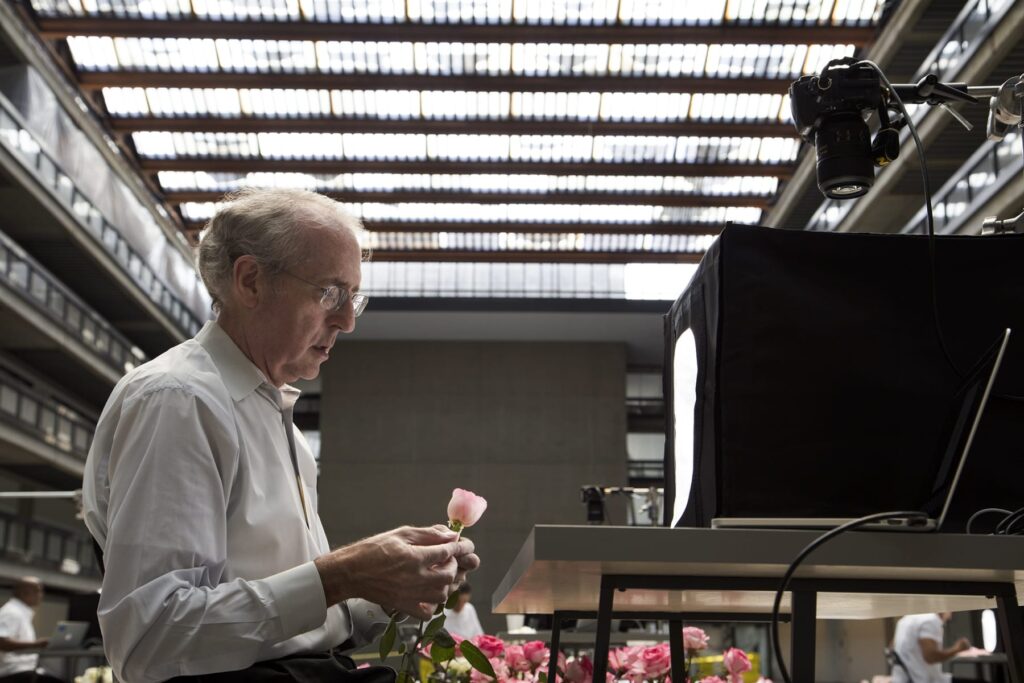
NB: What’s coming up for you? What other projects do you have going on, what’s next?
SM: I have a few projects. I’ll have a solo booth at Untitled at Art Basel Miami, with new AI petals and photographs. I’m making holograms, too.
NB: Is it with a gallery?
SM: Yes, it’s with COUNTY gallery, they’re based in Palm Beach, so this is their home turf!
In mid-February, I’m going to have a show with Nahmad Projects in London. That show is about my work around structural color, meaning, how birds and butterflies create color, and different instatiations of that.
One will be a piece in HoloLens (Microsoft’s Augmented Reality software), with a physical player piano. In augmented reality, there will be birds and watercolor effects that land on the piano and trigger it to play. There will also be sound spatialization that tracks the bird’s flight. You’re composing the birds and the music together.
Another piece that I’m working on uses diffraction grating, which is the glass used in Hololens. Diffraction grating is glass that has been etched 3000x per millimeter, so it refracts light and creates structural color that shifts when you move. Any grating can really be any color, it just depends on the angle of light, and the angle at which you’re viewing it. This is used in all sorts of optical devices — in airplane displays and in military technology — but I’m using it to create artworks. I will also put photographs into diffraction gratings.
The third work is that I’m also making holograms. It’s funny; it’s not as political or economic as some of my other works, it’s just more about pushing the structures of technology and what we can see. For the holograms, I made some super macro shots of plants that start to look quite hairy and weird.
NB: Just out of curiosity, do you have a studio where you produce your works? Or do you do this all on your laptop?
SM: I don’t have a studio, and I don’t think I will ever have a studio. If anything, I would have a place where I keep things. The truth is, even for my photographs, I used to use a studio and make my photographs on my own. This summer, instead, I went to Paris and worked with a few people. We rented one of the professional fashion shoot studios, with all the gear. Normally, the fashion shoots would be for one day. I went in and rented the place for a week, and did a full intensive! I got a much better work product than I would otherwise, being on my own in a studio. One day, maybe I’ll have a space. At this point, I don’t think that’s my plan.
